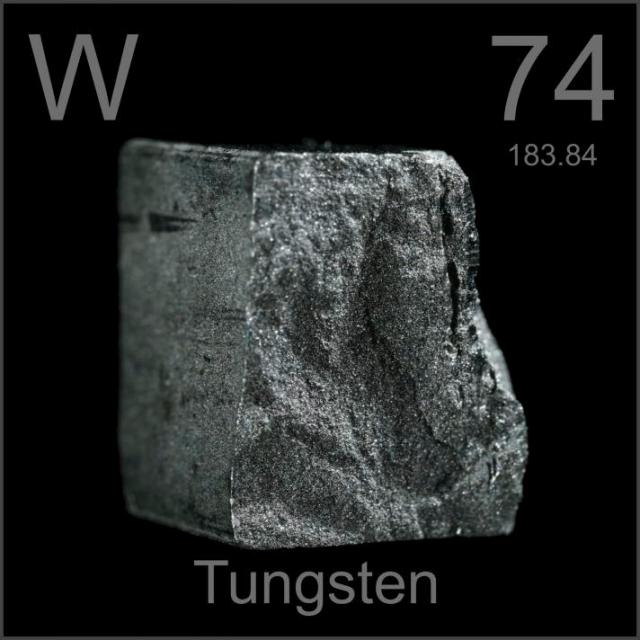Source of the photo
http://periodictable.com/Samples/074.5/index.s12.html
Author of the description
Gruiz Katalin

Atomic number
| 74
| Atomic mass
| 183.85 g.mol -1
| Electronegativity
| 1.7
| Density
| 19.3 g.cm-3 at 20°C
| Melting point
| 3410 °C
| Boiling point
| 5660 °C
| Vanderwaals radius
| 0.137 nm
| Ionic radius
| 0.068 nm (+4) ; 0.067 nm (+6)
| Isotopes
| 10
| Electronic shell
| [ Xe ] 4f14 5d4 6s2
| Energy of first ionisation
| 768.6 kJ.mol -1
| Standard potential
| - 0.05 V ( W+4/ W )
| Discovered by
| Fausto and Juan Jose de Elhuyar in 1783
|
|
|
ungsten is a lustrous and silvery white metal. The bulk metal resists attack by oxygen, acids and alkalis. Tungsten has the highest melting point of any metal.
Applications
Tungsten is used in filaments in incandescent light bulbs, it is also used in electric contacts and arc-welding electrodes. Tungsten is used in alloys, such as steel, to which it imparts great strength. Cement carbide is the most important use for tungsten: its main component is tungsten carbide (WC). It has the strength to our cast iron and it makes excellent cutting tools for the machining of steel. Tungsten is also used in microchip tecnology and liquid crystals displays.
|